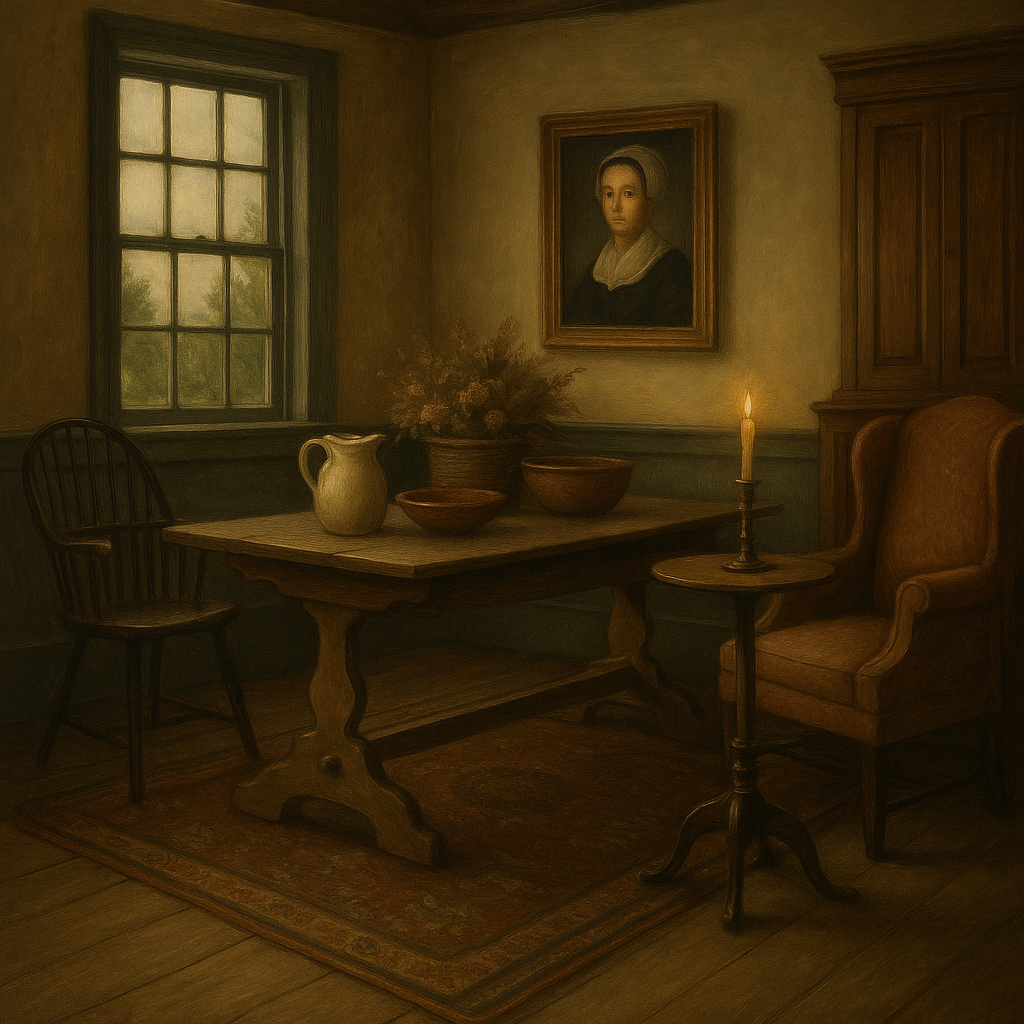
🕰 What Makes a Home Feel Historic?
🕰 What Makes a Home Feel Historic?
Timeless Tips for Creating a Warm, Story-Rich Space
There’s something about stepping into a historic home that immediately slows your heartbeat. The scent of old wood, the glow of candlelight, the imperfect charm of handcrafted furniture—it all speaks to a different rhythm of life. But what if your home isn’t from the 18th century? Can you still capture that feeling?
The answer is yes. A home doesn’t need to be old to feel historic. With the right materials, mood, and intention, you can create a space that honors the past while still being warm, livable, and deeply personal.
Here’s how to give your home that soul-stirring, historic feel—no matter where you live.
1. Layer with Texture and Age
Historic homes were built slowly, over time, with materials that aged naturally. Bring that feeling into your space with:
-
Distressed woods and timeworn finishes
-
Wrought iron, pewter, and aged brass accents
-
Hand-stitched quilts, linen curtains, and braided rugs
Look for pieces that feel touched by time—even if they’re new. A slight crackle in the paint, a nick in the wood, or a faded fabric can add depth and warmth.
2. Use a Historical Color Palette
Nothing transforms a space faster than color. Colonial and primitive homes often used muted, earthy tones inspired by natural pigments:
-
Mustard yellow, barn red, sage green
-
Slate blue, buttermilk cream, coal black
These colors create a sense of calm, history, and harmony—perfect for both walls and textiles.
3. Choose Furniture That Tells a Story
Historic-style furniture doesn’t have to be antique, but it should feel grounded and purposeful. Think:
-
Windsor chairs, trestle tables, shaker cupboards
-
Simple lines, honest materials, and practical beauty
Even one large piece—like a tall hutch or a rope bed—can set the tone for a room and invite the past in.
4. Let Light Speak Softly
Before electricity, homes were lit with firelight, candles, and oil lamps. Recreate that glow with:
-
Warm, low-wattage bulbs
-
Lantern-style sconces or chandeliers
-
Candle holders on mantels, tables, and window sills
Skip bright, overhead lighting and let the shadows do some of the storytelling.
5. Decorate with Intention
Early American homes were not cluttered—they were practical and symbolic. Decor was often tied to function or meaning:
-
Samplers stitched with proverbs
-
Crooked brooms and wooden spoons hung proudly
-
Seasonal wreaths made from herbs or twigs
Let your decor reflect your values—simplicity, hospitality, faith, family, or the turning of the seasons.
6. Use Historical Art & Textiles
Wall art plays a huge role in evoking history. You don’t need portraits of famous figures—choose art that feels personal, handmade, or time-honored, like:
-
Colonial portraits from the Bellewood Collection
-
Canvas wraps featuring period dress or pastoral scenes
-
Textile patterns based on 18th-century florals and stencils
Tie it all together with matching pillows, curtains, or floorcloths to make your rooms feel fully dressed in their time.
In Closing...
A historic-feeling home doesn’t come from buying antiques or mimicking a museum. It comes from telling a story through your space—one that honors craftsmanship, embraces imperfection, and values the slow, beautiful pace of life in generations past.
Whether your heart leans Colonial, Primitive, or somewhere in between, you can create a home that feels like it’s lived many lives—starting with yours.